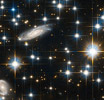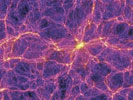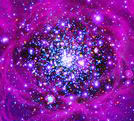Cosmic Voyage
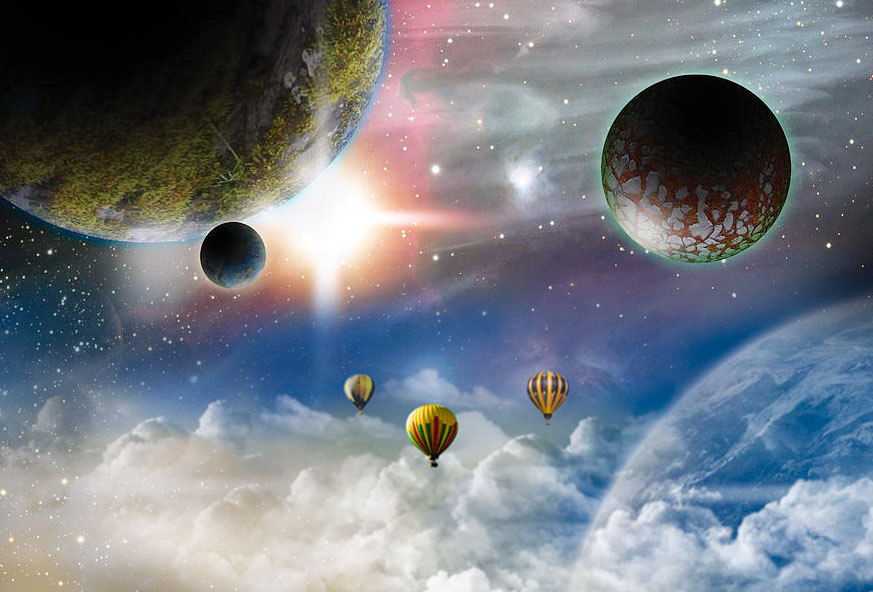
 The Hubble Space Telescope is one of the towering scientific and technological achievements of our age, and it has deepened our capacity for observation and discovery beyond measure. The documentary Hubble: Universe in Motion probes the revelations brought forth from this breathtaking invention, and celebrates its role in forever altering our understanding of the universe.
The Hubble Space Telescope is one of the towering scientific and technological achievements of our age, and it has deepened our capacity for observation and discovery beyond measure. The documentary Hubble: Universe in Motion probes the revelations brought forth from this breathtaking invention, and celebrates its role in forever altering our understanding of the universe.
First launched into orbit in April of 1990, the Hubble telescope remains in operation to this day. It’s captured a series of beautiful and fascinating details which may hold the key to comprehending the mysteries of an evolving galaxy. Reaching depths and realms of space never before documented or even imagined, the Hubble has enabled top astronomers tremendous insights into the history and functions of solar systems, black holes, exploding stars, planets and even the possibility of inter-galactic life.
Hubble: Universe in Motion summarizes several of the most profound discoveries made possible by the Hubble. For example, the telescope has successfully traced the violent process of star formation, and offered clues relating to the course of each star’s entire life span. Armed with this knowledge, scientists can reasonably predict the future of our own Sun. In another segment of the film, we learn how the unparalleled resolution of Hubble telescope imagery has allowed astronomers the ability to pinpoint characteristics of the Milky Way and Andromeda galaxies in greater detail than ever before. They’ve also uncovered the existence of massive black holes residing in the center of the most active galaxies in the universe, examined the most obscure blemishes on Pluto’s surface, and basked in the awe-inspiring intricacies of Saturn’s majestic rings.
The documentary is populated by the gorgeous and revealing imagery captured by the Hubble telescope over the last quarter of a century. In that brief amount of time, the Hubble has answered many of the questions that have long plagued the most ardent astronomy enthusiasts, and inspired new queries that had not previously been considered. The film uses clear and crisp narration to explain complex scientific concepts, and offers precious insight into the origins of the universe and our place within it.
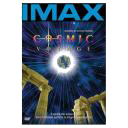 Nominated for an Academy Award, the following 36-minute IMAX production offers a state of the art, computer generated journey through the universe, and tries to pinpoint the role of human beings cohabitating within its vastness.
Nominated for an Academy Award, the following 36-minute IMAX production offers a state of the art, computer generated journey through the universe, and tries to pinpoint the role of human beings cohabitating within its vastness.
Among the topics included are a variety of the greatest scientific theories known to exist – some of which had never before been visualized on film – as well as a guided tour through the cosmos and solar system, and a look at the nature of black holes and exploding supernovas.
This IMAX offering presents us with not only one but two journeys – one in space (going from the entire universe to quarks) and one in time (going from the first cells to human beings).
These are both monumental enterprises, but unfortunately this half-hour movie can only offer us an inkling of either. It presents some beautiful images, although the journeys themselves lose much in the translation to the TV screen. Only recommended for those who want some relaxation.
The cropped version of the full image is presented and has 1.5 billion pixels. You would need more than 600 HD television screens to display the whole image.
It is the biggest Hubble image ever released and shows over 100 million stars and thousands of star clusters embedded in a section of the galaxy’s pancake-shaped disc stretching across over 40 000 light-years.
Credit: NASA, ESA, J. Dalcanton (University of Washington, USA), B. F. Williams (University of Washington, USA), L. C. Johnson (University of Washington, USA), the PHAT team, and R. Gendler.
Erik Wernquist: “Wanderers is a vision of humanity’s expansion into the Solar System, based on scientific ideas and concepts of what our future in space might look like, if it ever happens. The locations depicted in the film are digital recreations of actual places in the Solar System, built from real photos and map data where available.
“Without any apparent story, other than what you may fill in by yourself, the idea of the film is primarily to show a glimpse of the fantastic and beautiful nature that surrounds us on our neighboring worlds – and above all, how it might appear to us if we were there.
“As some may notice I have borrowed ideas and concepts from science fiction authors such as Kim Stanley Robinson and Arthur C. Clarke, just to name a few. And visually, I of course owe many tips of my hat to painter Chesley Bonestell – the legendary master of space art.
“More directly, with kind permission from Ann Druyan I have also borrowed the voice of astronomer and author Carl Sagan to narrate the film. The audio I used are excerpts from his own reading of his book ‘Pale Blue Dot: A Vision of the Human Future in Space’ – needless to say, a huge inspiration for this film.”
Posted in Science For The New Agewith comments disabled.


